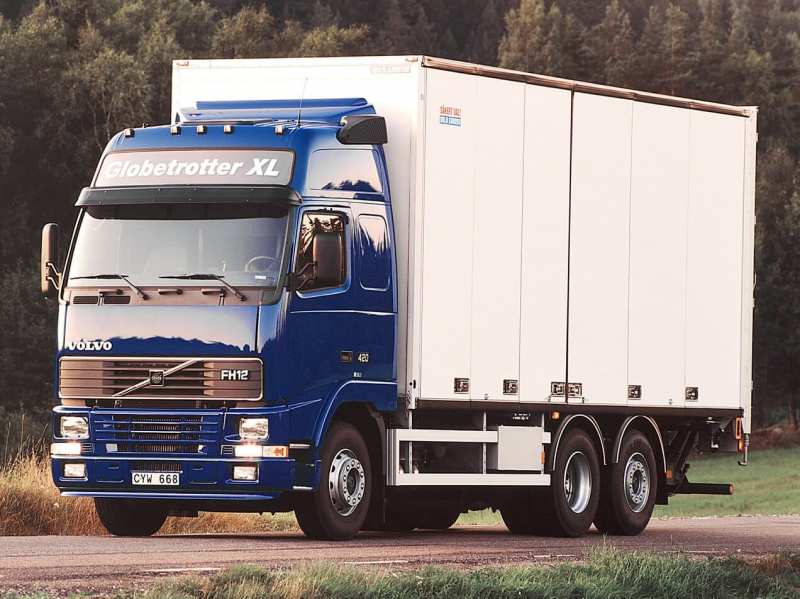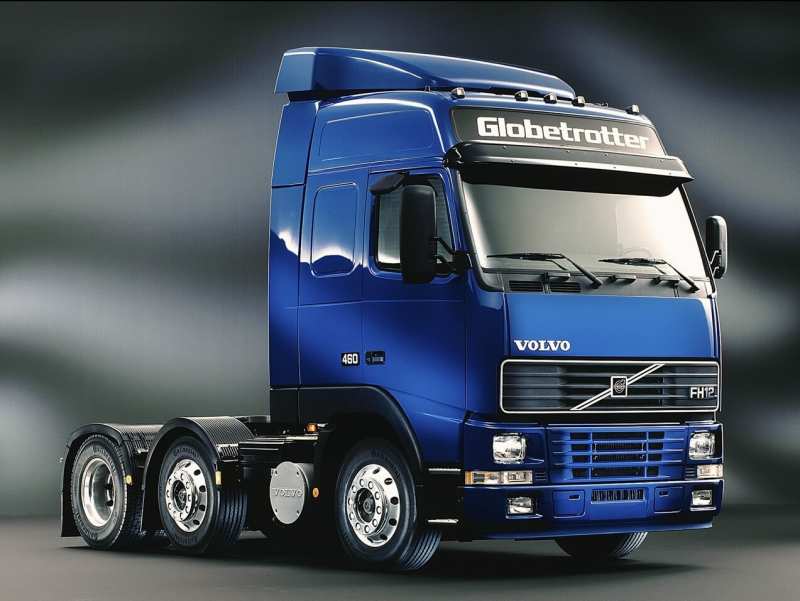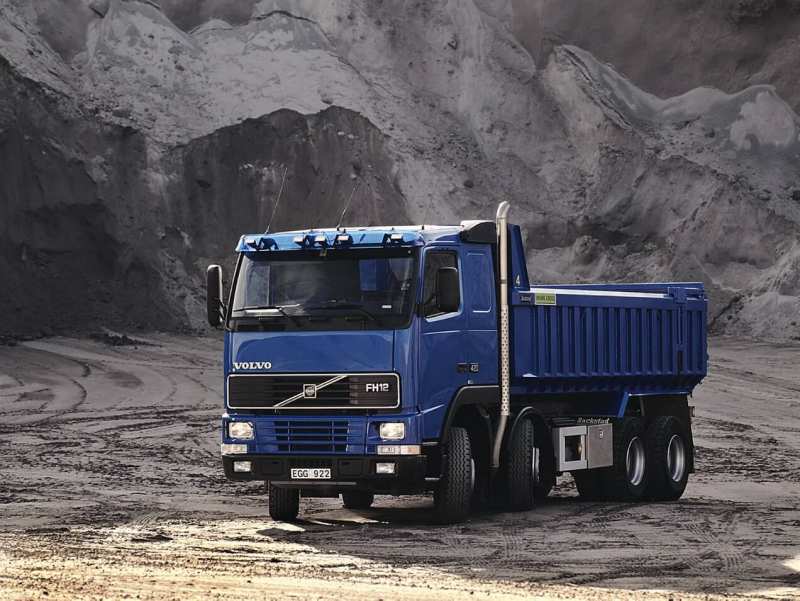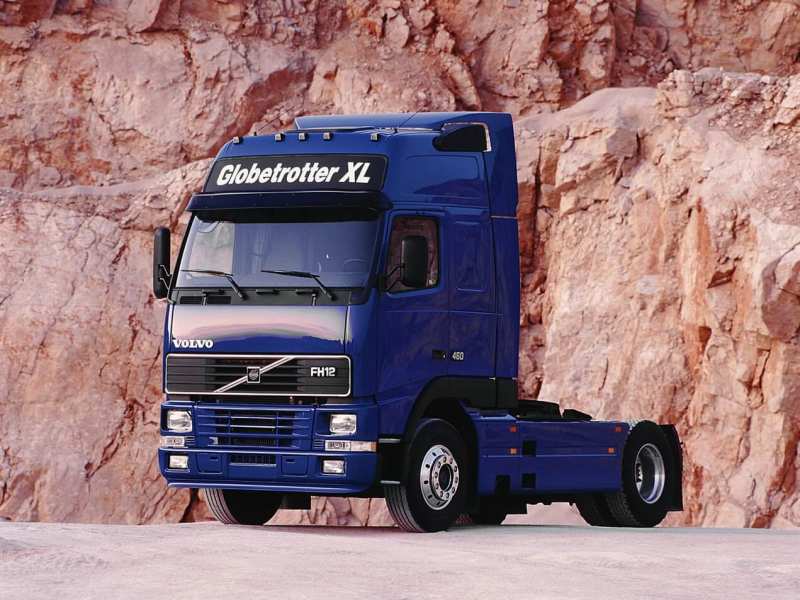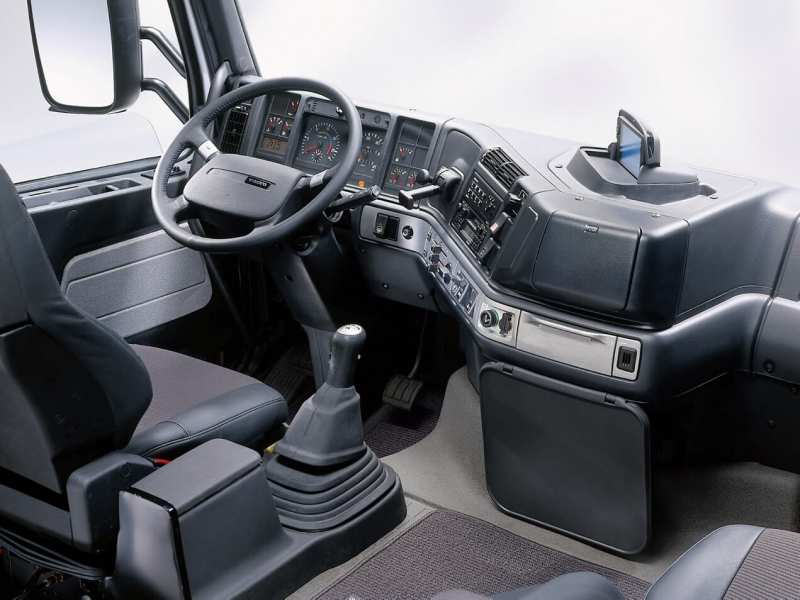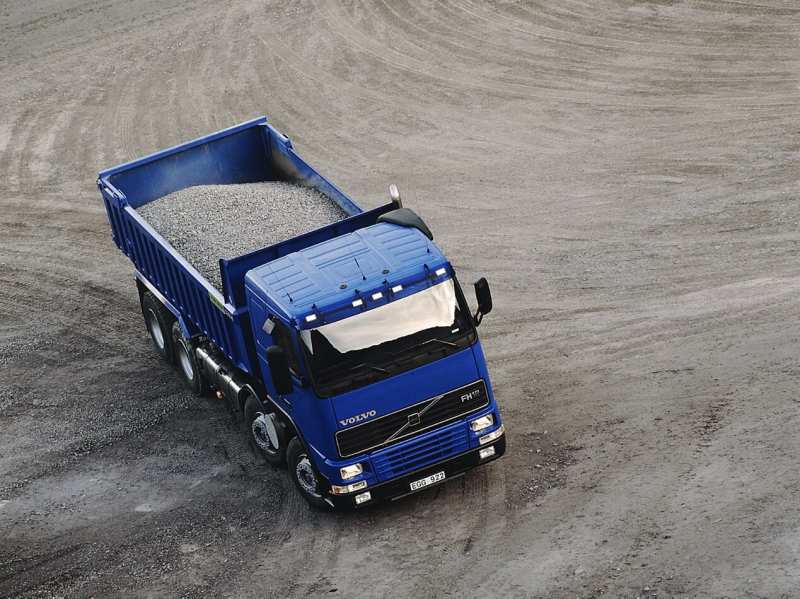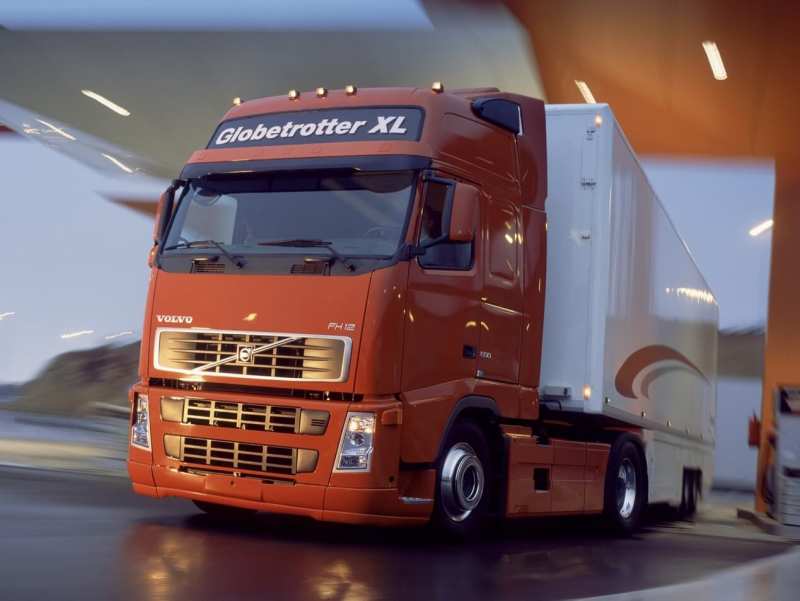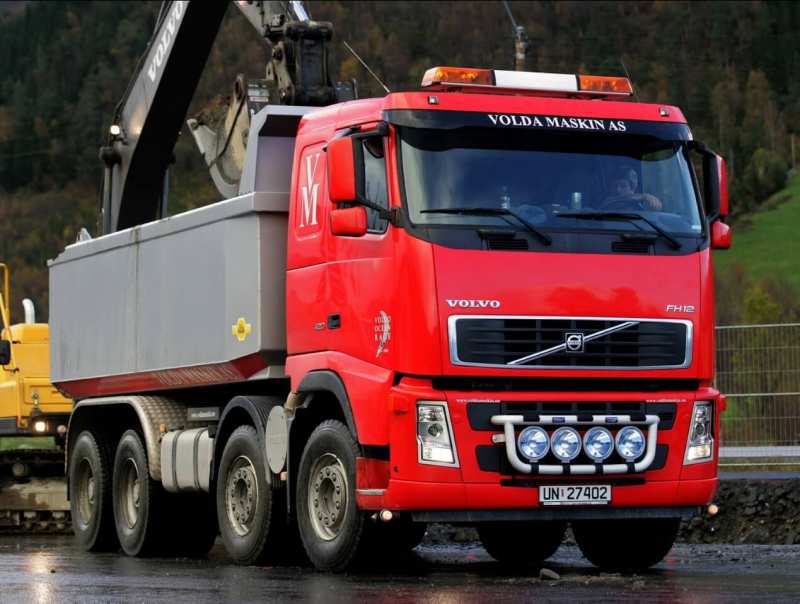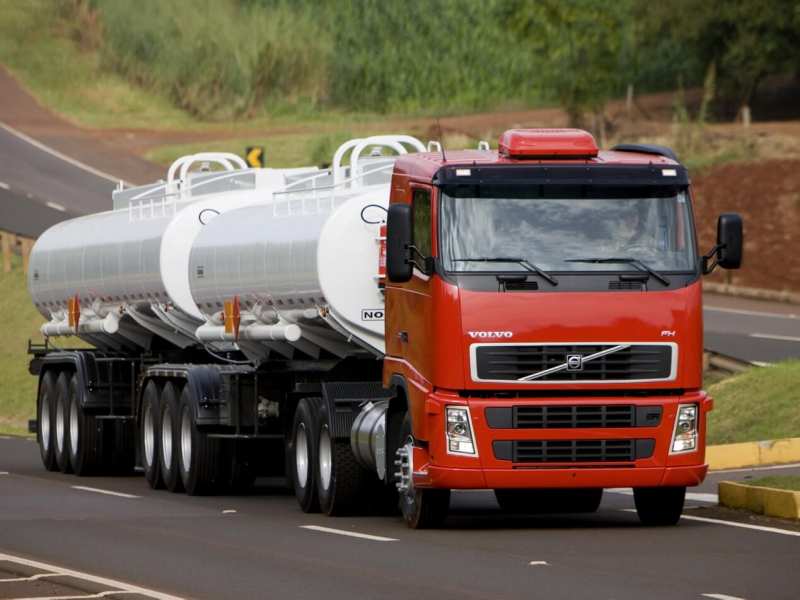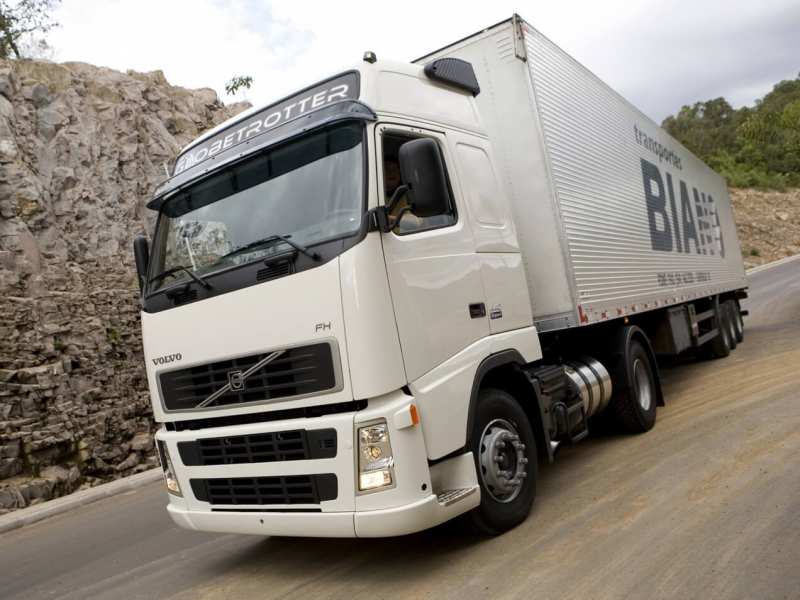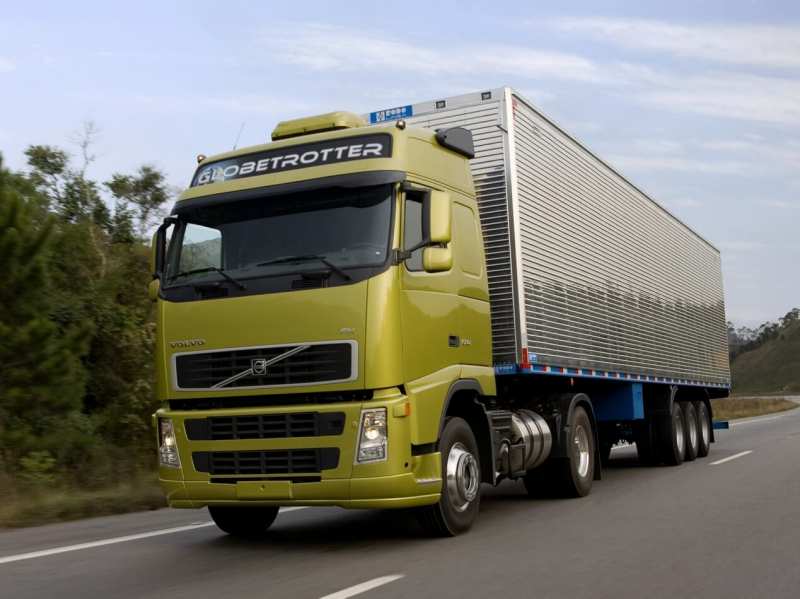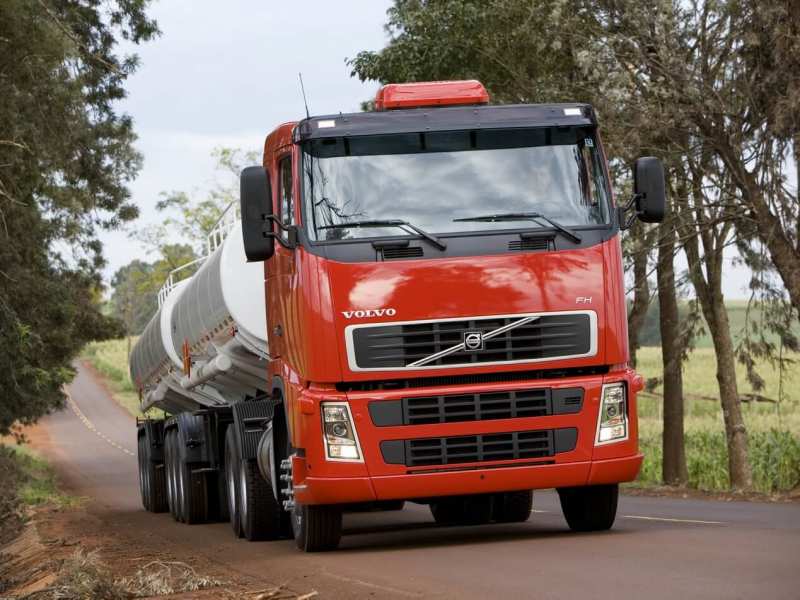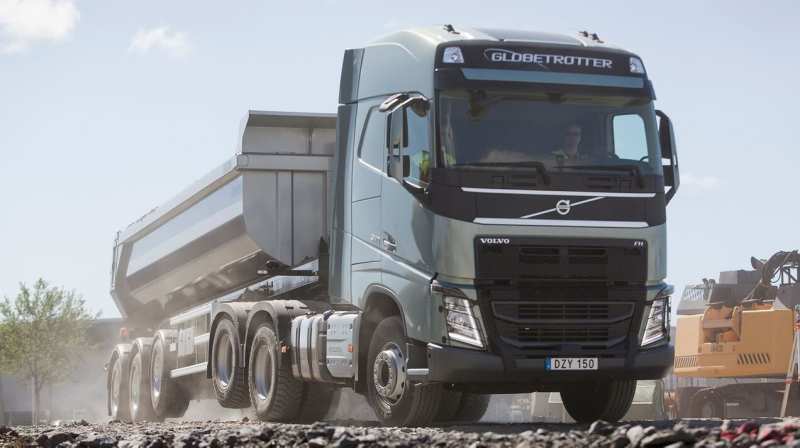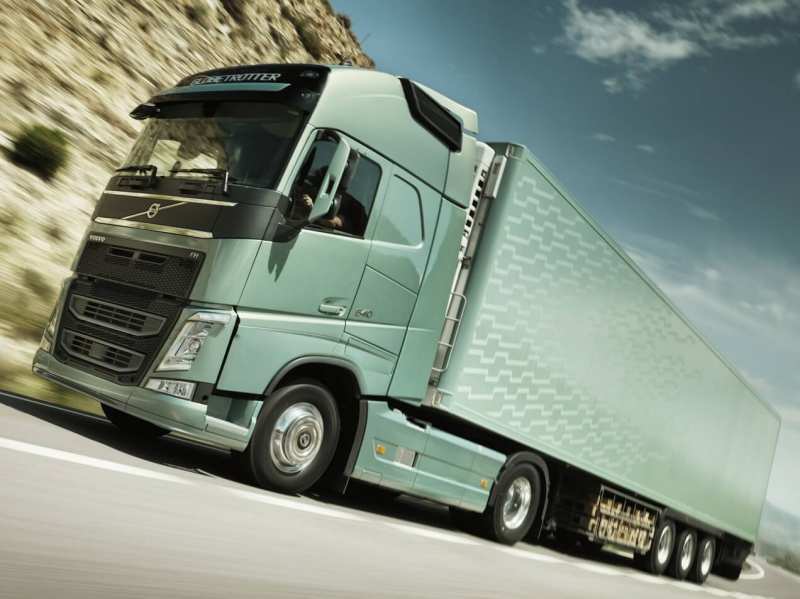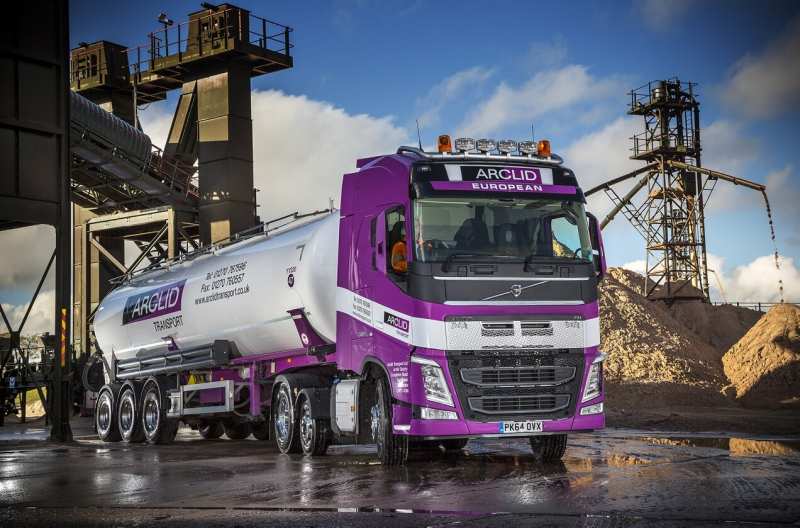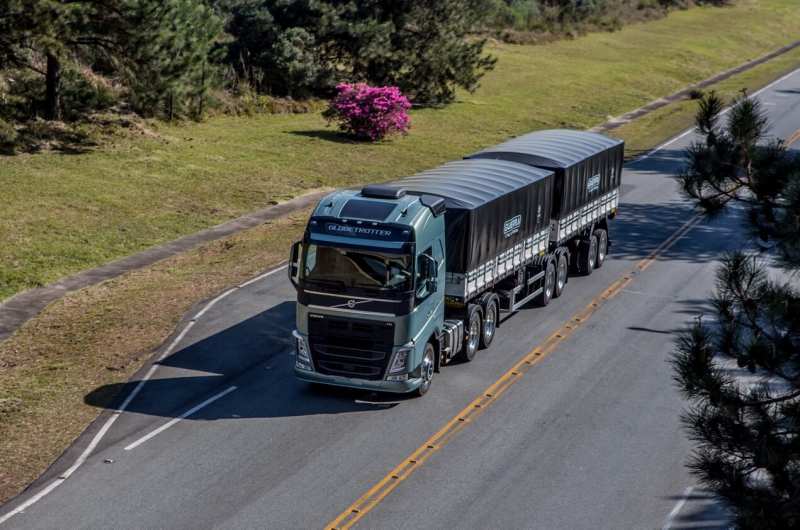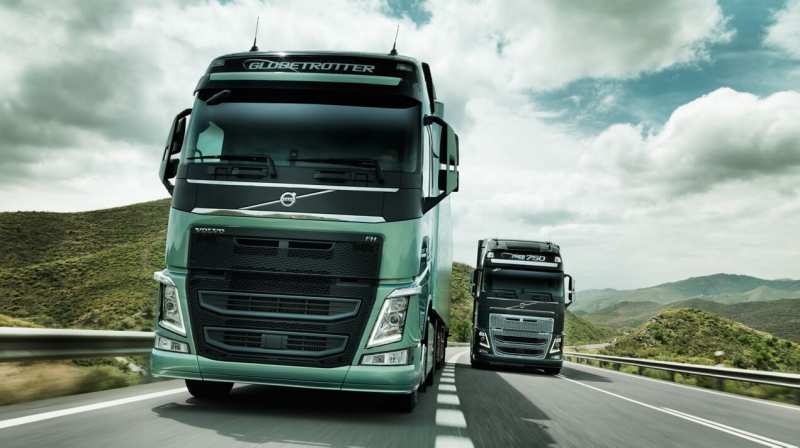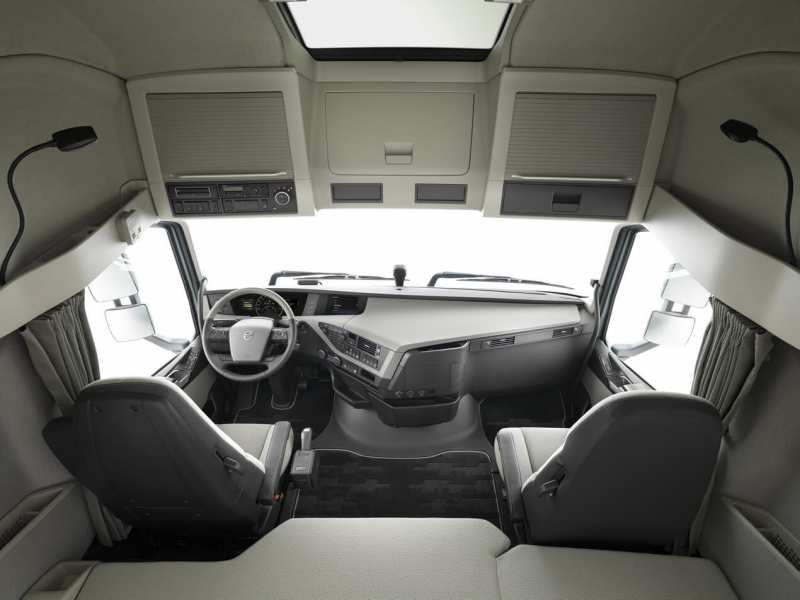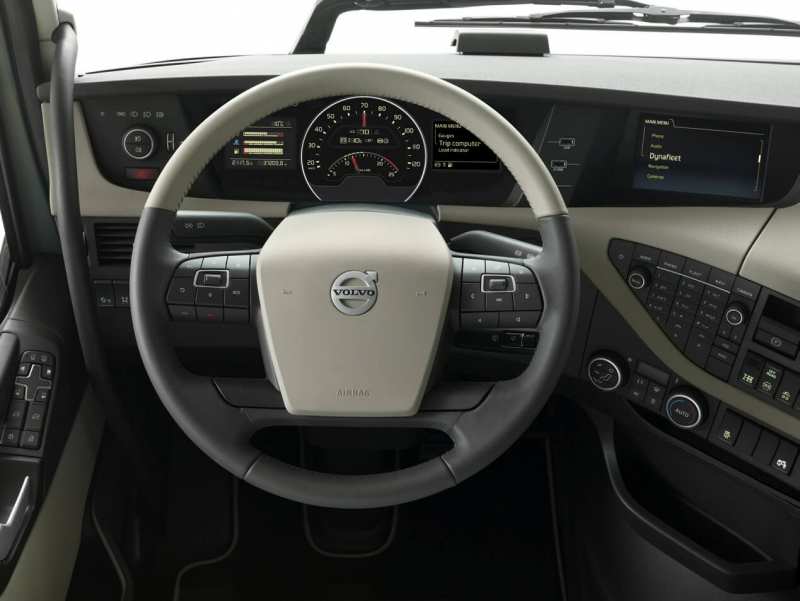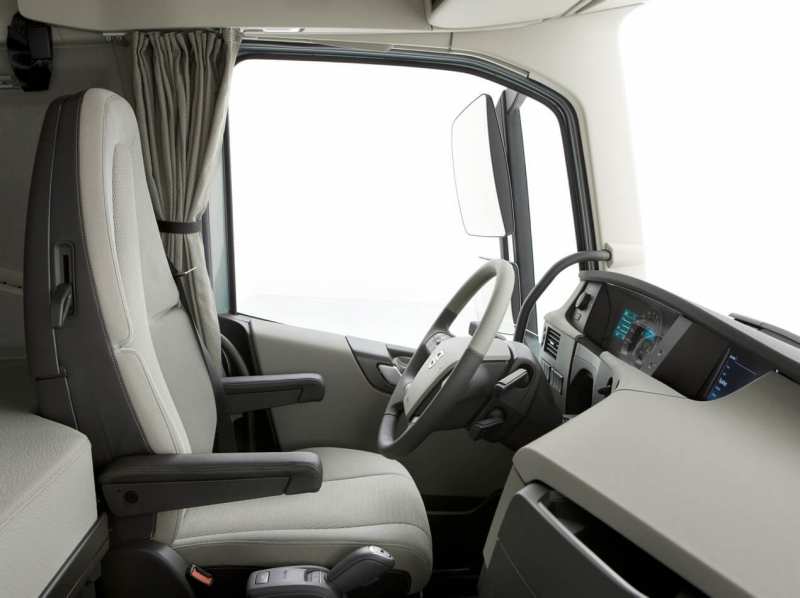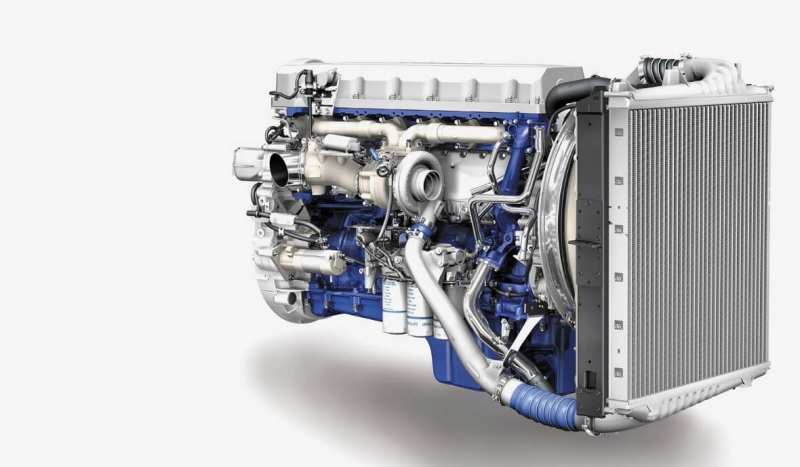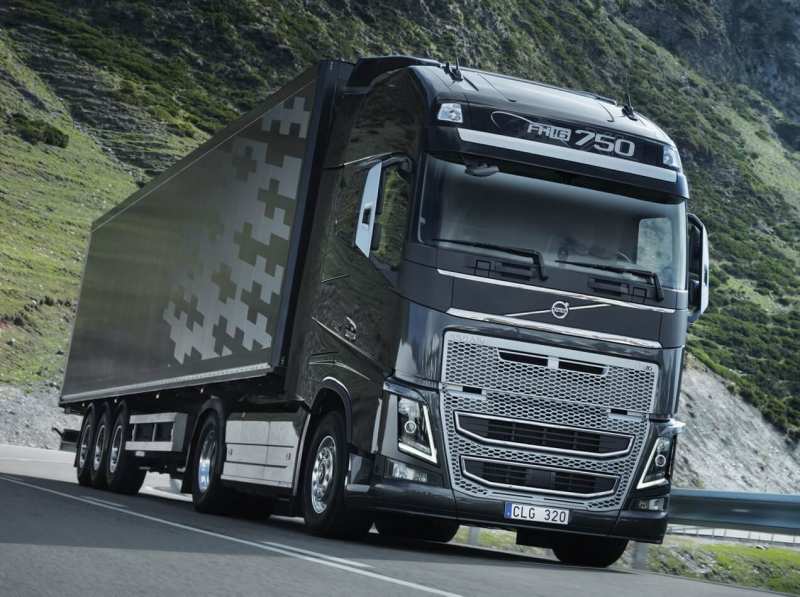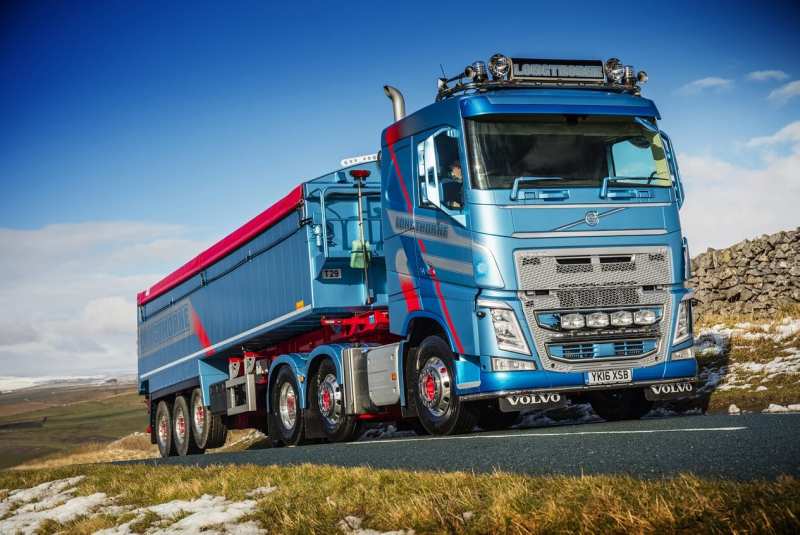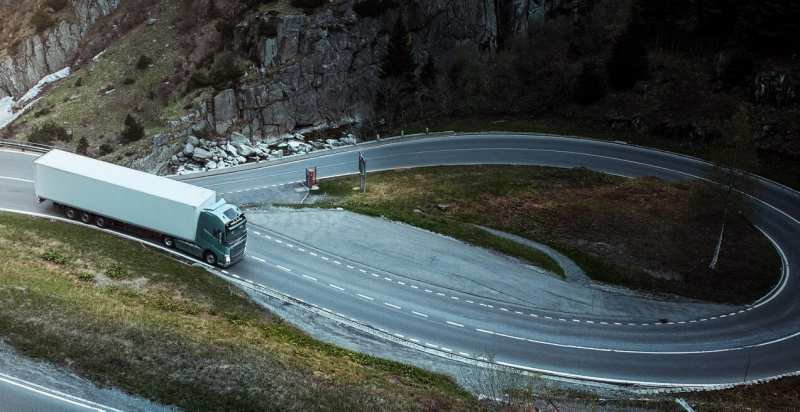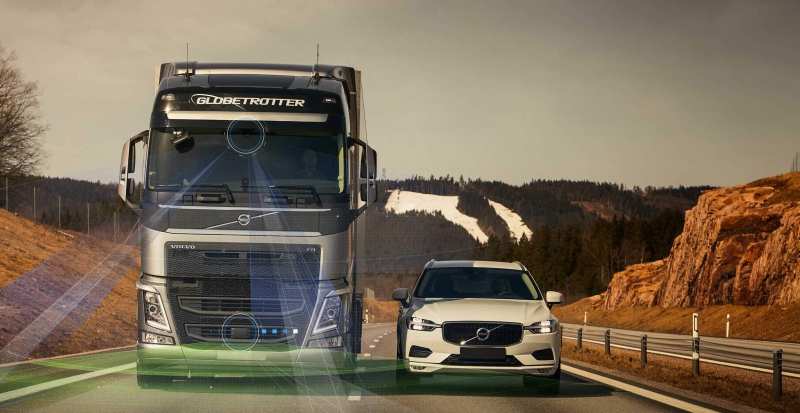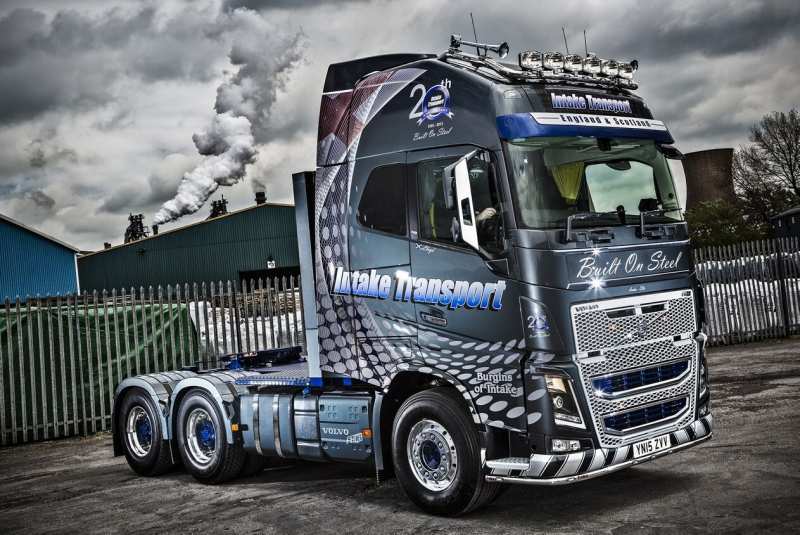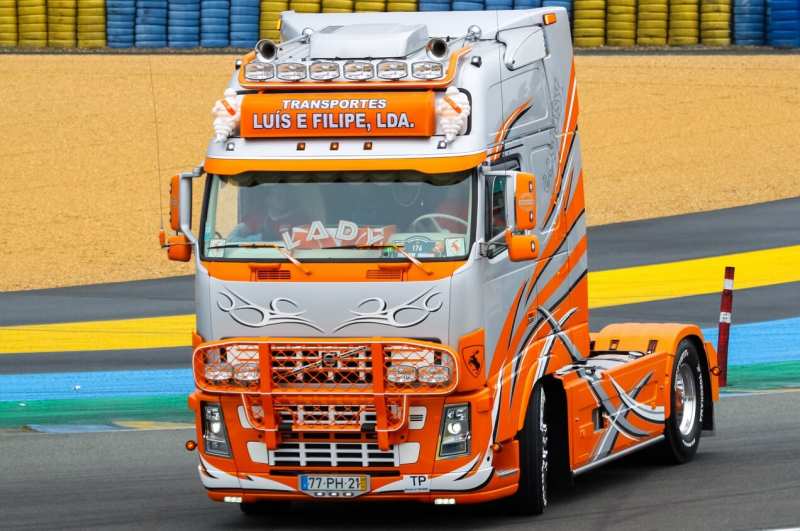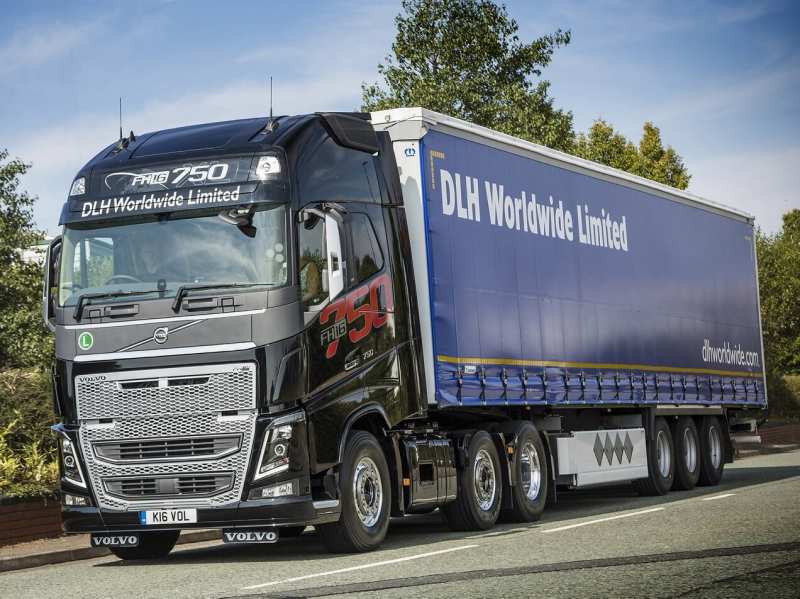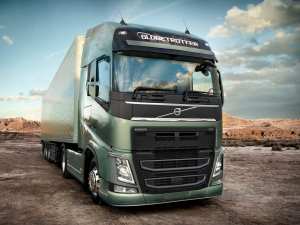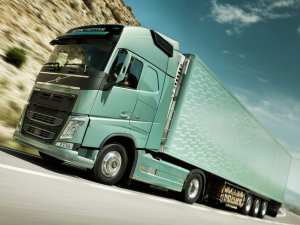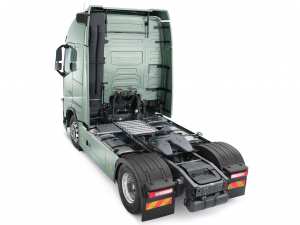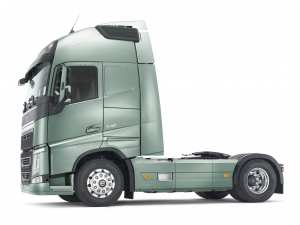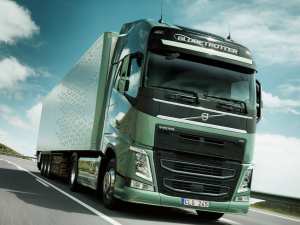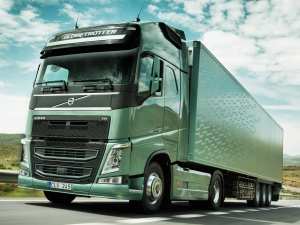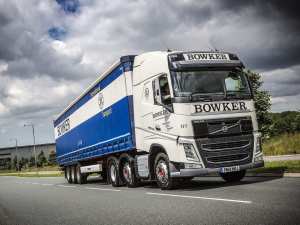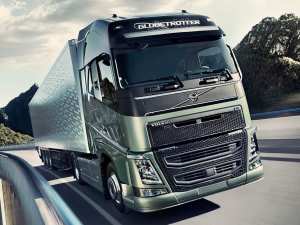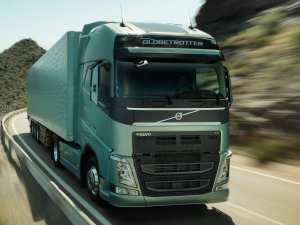Volvo FH
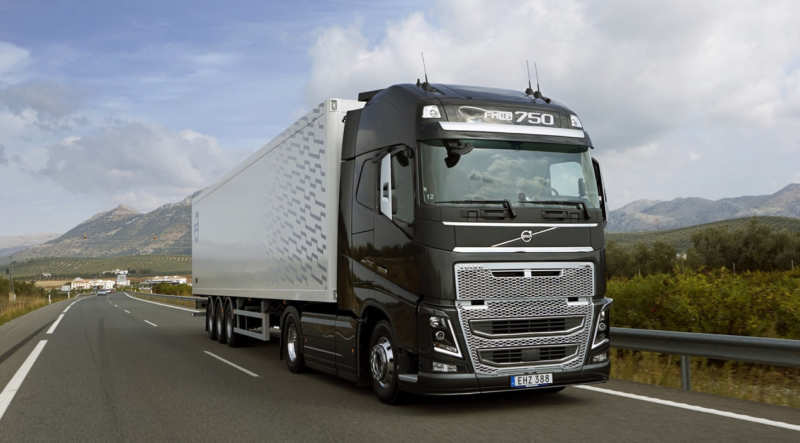
Volvo FH presents a family of heavy duty trucks, which are at the top of the model list of the Swedish company Volvo. The trucks can perform a variety of tasks (depending on the modification): transportation of goods on local, regional, as well as long-distance roads. In addition, Volvo FH vehicles carry out operations in road and capital construction, agriculture, forestry, municipal services and so on. The whole model range is Volvo.
- History of the vehicle
- Volvo FH I generation (1993-2002)
- Modernization of 1998
- Volvo FH II generation (2002-2013)
- Volvo FH III generation (2012-present)
- Outlook
- Interior
- Technical characteristics
- Mower unit
- TurboCompound Principle
- Transmission
- Carriage
- Safety
- Crash test
- Complections and prices
- Tuning
- Comparison with competitors
- Owner feedback
- Pluses and minuses
- Tooths
- Volvo FH photo
- Video overview
There are 5 platform versions (ultra-low, low, medium, high and ultra-high) for cars. The wheel formulas can be as follows: 4×2, 6×2, 6×4, 8×2, 8×4 and 10×4. The truck boasts four types of cabins (sleeper cab: Globetrotter or Globetrotter XL; low sleeper cab).
There are only 3 generations of this Swedish vehicle. The first family appeared in 1993, replacing the units of the F-family (F10, F12 and F16). Since then, the trucks have been repeatedly upgraded, so today they are very popular trucks all over the world. Every year, these models acquire more than 15,000 lucky customers.
History of the vehicle
Volvo has existed since 1916. It came from the bearing manufacturer SKF. In this regard, the name of the company can be translated from Latin as “spinning”. The debut Volvo vehicle was made in 1927. It was a passenger car. But already in 1928 the company began to produce trucks of this brand. Time passed and the percentage of trucks in the total production of the company increased.
Now this figure is already a record 95%, compared to the passenger cars. Even before the company was sold to Chinese companies, such powerful truck manufacturers as Renault Trucks (representing Renault Trucks), Mack Truck (a cult American brand of “long-haul” trucks) and Nissan Diesel (currently UD Trucks) joined the Volvo Truck group.
Official offices, as well as Volvo Truck service centers are present in 130 countries. Many countries (including Russia, in Kaluga) have production facilities producing Volvo trucks.
Volvo FH I generation (1993-2002)
By the end of 1993, the management of the Swedish company decided to start development of a new generation of large trucks FH, which replaced the F Cabover series. The latter has been off-line for 15 years. The design of the new FH division started almost from scratch. It took 7 years from the debut drawings to the serial assembly.
During its launch, the Volvo FH family was represented by two models. Volvo FH12 trucks were equipped with upgraded 12-liter D12A engines. They had an overhead camshaft as well as a direct injection system.
Another version of the family, the Volvo FH 16, received a modified 16-liter engine D16A and transmission, which it inherited from the previous car. For example, the D12A was one of the largest projects in the field of engine design from Volvo Trucks since 1950. The basic design, as before, was equipped with a six-cylinder engine with direct diesel injection.
The working volume was the same as 12 liters, but a completely different fuel and valve system was already in operation, compared to the previous Volvo engines. The engines were produced in a special factory in Sweden (Skovde). The Swedish company had a complete automated line, where the lion’s share of the assembly of the power unit was performed by robotic mechanisms, and the last touches were made by specialists.
The Swedish company was betting heavily on this engine. It was in line with the latest power rules, modest diesel consumption. The unit had a lower level of emissions, received its own “camshaft” design and received 4 valves per cylinder, one centrally located electronic injector control unit. There were also steel, aluminum pistons and an integrated compression brake for the powertrain.
On the Volvo FH road, there is little competition for performance, reliability and safety. In the division of multi-tonnage trucks this car is a favorite.
The new trucks had a modern (at that time) cabin, stamped from high-strength steel sheet. The new cabin was equipped with aerodynamic streamlined forms, a new level of safety and comfort. The cabin itself had a sharply inclined, more rounded windshield. External rear-view mirrors were also streamlined.
By using the new design of the cabin by hot-dip galvanizing, it was possible to increase the strength of the structure itself, while reducing the thickness of panels and box profiles. All of this reduced the overall weight of the cab by almost 30 percent. The 1st generation Volvo FH cab was a sensible transition from a spacious but square F-series cab to a more modernized FH cab.
The latter was more aerodynamically efficient, with improved ergonomics and improved comfort inside. Inside, many controls were intuitive, so they were easy to reach. The four-spoke steering wheel “hid” the dashboard with various sensors. The Volvo FH 1993 dashboard had 2 large dials.
On the left was the engine speed sensor, and next to the classic speedometer. The parking brake handle, together with the gear lever, is mounted very close to the driver. A rising table, which was on the right side of the control knob in the unfolded position, was very helpful on the way.
Before starting to produce the cabin of the new “FX” in a serial order, it was thoroughly examined in a wind tunnel to give the necessary shape and shape. This has had a positive effect on aerodynamic resistance as well as fuel efficiency. In addition, the Volvo FH of the 1st generation has been extensively tested in the most demanding crash tests.
This can include a face impact to a 15-ton concrete block, a pendulum impact (which weighs 1 ton) on the rear wall of the cab and the front tines. The important thing is that after these tests, the doors of the Volvo FH truck cabin had to open without any problems.
Since 1995, the FH Volvo has been the first heavy duty truck to be equipped with a driver’s airbag. This had a positive impact on the improvement of passive safety.
Modernization of 1998
Appeared in 1998, the restyled Volvo FH models received a slightly modified appearance of the cabin. But the aggregate part of the novelty was decided to upgrade significantly. Improved power plant received an index D12C. Maximum engine power was increased to 460 horsepower. The specialists also improved the design of the subframe.
Due to the installation of a more powerful engine, the gearbox had to be upgraded as well. With the new gearbox, the torque was increased to 2,500 Nm. Interestingly, with such high torque, the gearshift force was reduced by half. A major upgrade has been made to the design of the electronic control system.
Data could now be transferred via CAN bus. All information was displayed on the LCD display in the driver’s cab. The Swedish company, having invested a lot of money in its vehicles, was initially able to offer customers an extended list of modifications of the truck. It was possible to choose between different types of cabins, wheelbases and general designs.
It turns out that anyone could choose a vehicle for their specific purposes. Thanks to this policy of a wide range of products, combined with the standard reliability, as well as high safety of Volvo trucks, in a short period of time the company led the leadership of its niche. The debut generation of trucks was released at the end of 1993 and continued to produce it until 2002, when it was replaced by the next generation of Volvo FH II.
Volvo FH II generation (2002-2013)
The FH 2 truck division was officially introduced in 2001. Serial production of new products started in 2002. This Swedish model was produced until 2013. Later it was replaced by the 3rd generation Volvo FH. The features of the second family of trucks include 4 versions of the cabin, an abundance of various modifications and powerful engines, operating on diesel fuel. Volvo FH 2002 received an updated cabin with vertical headlights.
Interestingly, the car’s designation has encrypted certain data. The letter “F” stands for cabover layout, and the “H” stands for a highly installed cab over the frame.
The next modernization in the face of the second generation has significantly transformed almost beyond recognition the appearance and interior of the cabin. The latter was equipped with more streamlined forms. The length of the cabin was increased. Specialists have developed fundamentally new mirrors and headlights, and the interior has improved in terms of comfort. The corners of the panels now had more rounded contours.
We decided to rework the entire aggregate part of the structure in a different way. The novelty has acquired not only more powerful, but also more economical and environmentally friendly D12D engines and semi-automatic transmissions with “I-shift” system. After a short time, the plant began producing Volvo FH16 with upgraded D16C engines, which already give 550 and 610 horsepower.
After 2005, the trucks had “engines” that developed 660 horsepower. Following the advent of the powertrain division, which received the index D16E, the engine power could already be 580, 640 and 700 “horses”. The car with 700 hp engine had a torque of 3,150 Nm. After 2005, the model list of engines designed for FH trucks was supplemented by the D13A version, which received a working volume of 13 liters and a power of 360-520 horsepower.
The design of the new engine met the environmental requirements of Euro-3. After the improvements, the engine already met the environmental requirements of Euro-4 and Euro-5. After 2008, 2 family “FH” was subjected to the next update.
As usual, the development department has already devoted a lot of time to improving safety and comfort. The exterior of the cabin was changed. The company’s designers decided to install a new grille and front headlamp.
Until 2011, the list of engines for heavy trucks remained unchanged. At the end of 2011, the company began to develop a flagship truck FH16, which received a 750 hp power plant. Improved versions of the 2 generations of Volvo FH 2008 had:
- Adjustable seats;
- Rain and light level sensors;
- Radar that scans dead zones;
- Sensor crossing the dividing line.
The gearbox was two. The first was a 14-speed mechanical gearbox, which received a splitter and a demultiplier, as well as a couple of “creeping” stages. It was possible to purchase a Volvo FH II generation tractor with 12-range automatic transmission I-shift (all torque is transmitted to one or two driving rear axles with lockable differentials).
The update of 2008 allowed to install even more diverse electronics in the truck. Inside, ergonomics has been improved. The steering wheel became more pleasant, but retained the four-spoke design. It became much more comfortable to sit. As for the dashboard, its information has increased several times.
There was much more free space. Salon of the updated Volvo FH 2 generation received a large number of various drawers and compartments for luggage and trifling. For the basis of 2 families Volvo FH used a spar frame made of high strength steel. The front and rear suspension is dependent, suspended by means of parabolic springs (with anti-roll bars) or pneumatic elements.
The truck has a steering system, complemented by hydraulic power steering. The Swedish model has an electronically controlled braking system, and all its wheels are equipped with drum brakes that function with the electronic system ABS. “Swede” has a wide choice of modifications, durable and reliable design, powerful power units, high level of comfort and safety, good equipment and a list of other advantages.
The drawbacks of the second generation of Volvo FH are the high cost of spare parts and maintenance, as well as the high consumption of diesel fuel. Since the machines are no longer produced, they can be purchased on the secondary market. As of 2017, it was possible to buy a used car at least 1,200,000 rubles. The cost will depend on the year of production, modification, technical stuffing, cabins and the general condition in general.
Volvo FH III generation (2012-present)
The next 3 generation of large-capacity trucks of the flagship family was presented in September 2012. Serial production of the novelty began in 2013. The truck has a modern appearance, ergonomic interior, a large number of proposed modifications and efficient power units.
Many people call the design of the novelty futuristic and pleasant. Its design has received an independent front suspension. Inside there is much more free space. The list of power units received units that meet the strict environmental standards Euro-5 and Euro-6. The most powerful engine develops 750 horsepower. Together with semi-automatic system I-Shift there is an automatic Powertronic box.
Outlook
The appearance of the Swede is truly unique and futuristic. I would like to quote the words of one of the managers of this project – a new truck created by the company – a fundamentally new truck with a body, none of the elements of which was used in previous versions.
Based on the words of the creators themselves, they wanted to design the truck in such a way that everything remains the same as in the previous family, but it became even better. However, it was very difficult to achieve this, as for 19 years the structure has almost exhausted all its own resources.
Due to the next toughening of environmental standards in European countries it was necessary to change the structure of units and units, which are initially associated with the cooling system of the power plant and the circulation of exhaust gases. To achieve this, it was necessary to increase the space for the engine location in the bow area and in the area of the engine tunnel.
In order to install the world’s most powerful diesel engine in the new FH truck, and to use the new equipment for Euro-4 and Euro-5, it was necessary to reduce the living space of the cabin or to compromise on aerodynamic performance.
Neither of these companies wanted to sacrifice, so they developed a completely new cab for the Volvo FH16. The new cabin has a new power frame, other proportions, height and internal volume, increased by 1 m³. The creation of the truck, which has high-tech systems and components, entailed the installation of the most modern and high-performance equipment.
An example is a line of forging presses at the factory to build all the parts. Specialists began to press the parts of the cabin using a special technology in 5 stages. What’s more, the process of pressing elements with complex geometry is worthwhile. They are pressed in several stages, due to which it is possible to achieve ideal quality of parts connection during assembly.
The inclination of the racks does not exist visually. This solution has had a practical effect on the quality of the view. As for the front racks, they have become seriously thinner. But in general, experts have collected a stronger structure than in the past cars with large “beams” of the front racks. It is not even worth worrying about, as the topic of safety in European countries is a priority.
According to Ricard Orell, Volvo Trucks’ Design Director, the appearance of the new Volvo “FC” can be called a victory, which will be celebrated by truck drivers around the world. Designers and constructors have been tasked with creating uniform and harmonious forms. The look turned out to be bright and assertive. The image of the car, its visual perception are the key factors that were taken into account during the creation of a perfect appearance.
It feels like the new Volvo FH 2018 is tilted forward and the wheels hit the ground hard. The owner does not have to go to a specialist workshop to give the truck its original appearance. The Swedish company offers you to save your time and money. You can order a Volvo tractor with a cabin painted in any color you want. Available in about 650 different colors, tones and shades.
External mirrors provide a significant contribution to the uniform image of the cabin. Experts decided to take out from the vertical front rack on a thin bracket. This has greatly improved the driver’s vision and vehicle aerodynamics. I would like to say separately about the correct selection of parts and finishing of the outer part of the cabin. The aerodynamic performance of Volvo FH III generation is significantly better if we compare its predecessors.
This has been achieved through the streamlined shape of the cab. Due to the precise assembly of the distance between the top and bottom, the space between the top and bottom of the cab is reduced to a minimum. It means that the air is able to bypass the cab instead of passing through it. This not only has a positive effect on aerodynamic resistance, but also on diesel fuel consumption.
In general, we can say with certainty that the new generation of Volvo FH cabins are completely new and have an unusual design. A characteristic feature of the nose area of the truck is the original slanting molding with a nameplate, which migrated from the radiator grille higher, closer to the windshield.
As for the grille itself – it received a two-storey design and has two folding steps to access the front glass. In its appearance, the grille resembles the previous generations. It is impossible not to notice the newest light-blocks which have received sharp-edged LED-lights of daylight. Interestingly, from November 2018, such filled lights will now be mandatory in the European Union for all new trucks.
Interior
As described above, the internal volume of the cab increased by one thousand litres compared to previous vehicles. Interestingly, 1/3 of the increased space was used to expand the boot. In front of the driver was installed a new ergonomic dashboard, which received a curved shape, which provides easy access to the provided data and controls.
It increases the comfort and convenience for the driver by adjusting the steering wheel angle and height, as well as the steering column, and the seat with a range of adjustment of 24 centimeters in the direction of forward and backward. The non-trivial steering wheel adjustment looks interesting.
First, press the small foot pedal with your left foot and then find the optimal position for the steering column. Next comes an interesting point: by pressing the pedal again, a full adjustment can be done if you change the inclination of the “steering wheel” in relation to the column itself (within 20 degrees).
The volume of compartments for things has grown by as much as 300 liters. The width of the sleeping compartment specialists of the Swedish company were able to increase by 55 millimeters, which together provides already 815 millimeters.
With the help of the new air-conditioning system “ParkCool” the comfortable rest is provided. This system also contributes to efficient fuel consumption while the vehicle is in motion. The convenience of a sleeping place has been considerably improved. The lower berth width has increased by 40 millimeters, and the adjustable top of the berth helps to provide the most favorable position when reading or watching TV.
The sleeping place has a control panel that provides access to the control of internal lighting, “air conditioning”, alarm clock, autonomous “stove” system, multimedia system, locks and hatch. It is convenient that the driver can control these elements directly from the sleeping place.
The presence of a new dashboard brings freshness to the interior. All the necessary data is located right in the center of the dashboard. Side by side are devices that the owner does not use as often. The left screen shows the total fuel level, with the upper sensor responsible for the so-called AdBlue.
The right screen, on the other hand, displays the readings from the on-board computer and also informs about the temperature of the coolant, the current consumption of diesel fuel and so on. All keys of the new Volvo FH 3 generation are listed in order of importance. The most space is occupied by a round speedometer combined with an engine speed sensor.
The last developers have placed in the bottom of the speedometer itself. Moreover, slightly higher is the dial showing the gear engaged, the speed at which the cruise control is set, etc. With the help of such solutions it was possible to save useful space on the dashboard. On the right you can also see the multimedia display that displays the navigation, as well as similar necessary data.
With the help of the remote control you can adjust the air suspension, control the body lift and observe the load on the axis.
Drivers can now adapt to the pedal unit more quickly. It is noteworthy that the driver’s seat can be moved either electrically or manually, depending on the version. As for the seat, it is comfortable, has improved side support, as well as lumbar support.
If the driver stops for long periods of time in hot weather, the new Volvo FX 3 generation can be comfortably equipped with an electric cooler powered by the battery. It turns out that the basic air conditioner, together with the main power unit of the car, which makes it work, will also be able to “rest”. In addition it will turn out to save diesel fuel.
Technical characteristics
Mower unit
The latest Volvo FH16 trucks have two types of engines – “D13C” and “D16G”. They are six-cylinder in-line “diesel” engines with liquid cooling, turbocharger, turbocompound and intercooler. The volume is 12.8 litres. Both engines meet Euro-5 environmental standards.
Volvo Trucks provides customers with a wide range of powertrain options for Volvo FH16 trucks. Both versions of the engines have different capacities: 540, 600, 700 and 750 “horses”. The latest motor has received 3,550 Nm of torque, which is a very good result. Thanks to this choice of power modes, the customer can choose a truck specifically for himself.
Volvo FS motors are equipped with constructive solutions. These include the exhaust gas recirculation system, AdBlue injection, as well as a particulate filter. Swedish car power units have direct fuel injection. Their design is equipped with single cylinder heads and camshafts mounted on top.
The electronically controlled nozzle pump guarantees an injection pressure of up to 2,400 bar with excellent synchronisation – by means of the EMS engine control system. The closed crankcase ventilation system ensures uninterrupted crankcase gas recirculation. The rear-mounted drive unit features a compact and lightweight design.
Volvo FS trucks 3 generations have steel or aluminium fuel tanks with capacities from 150 to 900 litres. The highest possible capacity for the FH is 1,480 litres if the main and additional fuel tanks are taken into account. The special AdBlue fuel tank is made of plastic. It can accommodate from 32 to 100 litres. It is noteworthy that the tank has its own built-in pump.
TurboCompound Principle
Turbocompound is a classic recirculation system. It is able to convert, as well as to use the energy that used to be just “in the pipe”. “The energy produced does not leave the engine far away: the 2nd turbine behind the turbocharger runs just off the exhaust gases, taking extra heat from them. This turbine can rotate at up to 55,000 rpm.
This movement energy is transmitted by turbine gears and hydraulic clutch, and then through the gears of the gearbox to the “crankshaft”. This circulation generates a noticeable increase in rotational forces. In addition, additional traction can be achieved without significantly increasing diesel fuel consumption.
In 2016, after 23 years, the Swedish company finally decided to get rid of the injectors on D13 engines. Together with the introduction of the latest aerodynamic elements, improved transmission and a new gearbox I-Shift Crawler, Volvo showed a new family of power units D13. Previously, the engine D11 and D16 have already been rebuilt to Common Rail, and now the most popular engine of the company began to support this system. The new engine not only meets Euro-6 environmental standards, but is also 5 percent more economical.
Volvo Trucks
The power units comply with the relevant Euro-6 standards. The latest heavy-duty trucks are fully compatible with Volvo diesel-powered vehicles. And the CO2 emissions of the new trucks are reduced by 20-100% when compared to diesel engines (the percentage depends on the type of fuel). The latest Volvo FH LNG and Volvo FM LNG have 420- or 460-horsepower engines for heavy regional and long-distance transport.
According to Lars Mortensson, Director of Ecology at Volvo Trucks, Swedish trucks with liquefied natural gas or biogas as their fuel are a good alternative. This is particularly noticeable from a climate perspective. Such developments of the company meet high standards for productivity, fuel efficiency, as well as transport range.
Instead of traditional Otto-type engines for gas vehicles, Volvo FS LNG tractors have gas engines that operate on the principle of Diesel. This means that drivers who prefer “gas vehicles” will not sacrifice performance, fuel efficiency or reliability.
The Volvo gas-powered unit, which has 460 horsepower, has a torque of 2,300 Nm (the 420-horsepower version has 2,100 Nm). Similar characteristics have similar diesel engines Volvo. Interestingly, the fuel consumption of the new “engines” is similar to Volvo’s diesel engines, but 15-25 percent lower than that of conventional gas versions.
The company’s new engines use natural gas in the form of LNG (liquefied natural gas) or biogas, which is often known as bio-LNG. These types of fuel consist of methane. If biogas is used, the undesirable impact on our atmosphere is reduced by almost 100 percent, and if natural gas is used, by 20 percent. In order to ensure a significant transport range, the tanks are filled with LNG stored at a pressure of 4-10 bar at temperatures ranging from -140 to 123 degrees Celsius.
The largest modification of the tank should last for 1,000 kilometers. Filling time is comparable to that of diesel fuel. During the movement of fuel starts to heat up, shrink and turn into a gaseous state before it is directly supplied to the engine. In order to ignite the gas at the time of inlet, a little more diesel fuel is supplied to it.
To reduce carbon dioxide emissions by 100 per cent, fossil diesel must be replaced by hydrogenated vegetable oils in combination with bio-LNG. Volvo Trucks is currently working with customers and gas suppliers to increase the infrastructure for liquefied natural gas in European countries. It is encouraging that their efforts are being reinforced politically in some countries as well as in the European Union as a whole.
Transmission
The new Volvo FH 2018 has a 14-speed manual transmission with a pair of lowering speeds and 4 rear speeds. A 12-speed automated I-Shift transmission is also available. Wheel configurations can be: 4×2; 6×2; 6×4; 8×4. Interestingly, at first it seems as if the housing of the gearbox I-Shift, which is considered an example of the most modern transmissions, covers under itself, a standard ICPC.
However, this is only at the first acquaintance. If this element is studied in more detail, many will realize that it cannot be called simple “mechanics”. The mystery of the box is embedded in the electric remote control unit, which regulates the functioning of the pneumatic system. It, in turn, controls the clutch and gear system.
VU continuously receives data on all settings of the truck movement, analyzing which, ECU performs switching speeds. The unit functions together with the engine. Once it receives the necessary data, the unit can adjust the speed, as well as activate the engine brake. This results in an optimum speed change mode.
The function of the new Volvo FH III can be attributed to the I-Roll technology. It is able to automatically switch off the motor while the machine is driving downhill, using the vehicle’s inertia. The I-Roll function reduces diesel consumption by 2 percent.
Thanks to the intelligent software of the “Ai-Shift” system, an automated selection of the optimal transmission is provided. If necessary, the owner can enter the procedure for selecting the desired gear using the shift key, which is placed on the selector by specialists.
When driving in eco-mode, I-Shift technology changes from one speed to another with high accuracy, which provides more productive operation of the power plant. Greater fuel savings can be achieved with the optional I-See option, which can store and systematize data on climbs and descents.
Based on this information, the best acceleration, torsional forces and higher gearing will be prepared prior to each climb and will be activated for an extended period of time. Interestingly, I.C.’s climbing technology uses the available terrain data to prevent unnecessary switching to lower ranges.
The specialists have also equipped their I-See system with the ability to take data not only from GPS-cards, but also from a cloud server. But there is one condition – a truck has already been on this road. Then this technology will be able to load information into the electronics, which will worry about the preservation of diesel fuel.
As for the clutch, it can be single-disc or double-disc, pull type. Rear Volvo FS axles 3 generations may differ in structure, load, rotational force and other data. The drive axle can be raised on a two-axle platform.
Disengages and lifts the rear axle in the two-axle base by pressing a button on the dashboard. This reduces fuel appetite as well as turning radius.
Carriage
Standard suspension for Volvo FH 13 – 3- or 2-leaf front parabolic springs and 4-balanced rear air suspension. The independent front suspension on the crossarm is installed on only a few of the tractor’s modifications, as the demand for them is not so great.
The owners have not yet been able to appreciate the proper innovation. The brake system has disc brakes, but there are models that received drum brakes. For the latest generation of Volvo FH13 provided a parking brake, which is activated not by a lever, but with a special key that transmits a signal through the electronics.
When the owner forgets to press the button, the car will be able to engage the parking brake itself. The truck is equipped with a power steering system, and an active steering system with an additional electric power steering system is available as a separate option.
Safety
Any cars of the Swedish company Volvo have always been known for the quality of safety. Even trucks are no exception. The new third generation of the world-famous Volvo FH 2018 is equipped with a high level of safety. The models have been thoroughly tested by various companies.
According to Carl Johann Almquist, who is the Director of Traffic Safety and Volvo Trucks’ products, they know what happens on the road. In addition, they are well aware of accidents – they know which elements need to be strengthened or upgraded.
That’s why they do a lot of additional testing, which is not required by law. It turns out that Swedes are themselves interested in the safety of their vehicles and their image as the safest truck in the world. The new truck has a system that knows how to warn of a collision with the emergency braking option in automatic order.
The technology can inform the owner of a possible collision and allows the driver to make a decision on his own to avoid the impact. If the owner ignores the system alerts for various reasons, the car will brake independently.
Potential buyers will be pleased with the system of help in the restructuring. When a driver decides to change lanes, this technology is able to use the radar to monitor the blind area near the cab on the passenger side for obstructions. In the event that a rearrangement can be dangerous, the owner will be informed by a buzzer and a flashing icon next to the left side mirror on the passenger side.
The technology operates at speeds of up to 35 kilometres per hour and can be switched off.
The new technology also has a lane control system. The technology monitors the position of the machine in the lane. When the truck crosses the lane marking or starts to deviate quickly to the side, the owner will be informed about it. This system can be counted on at speeds of more than 60 kilometres per hour and the driver can also switch it off.
During long journeys, the driver’s fatigue prevention technology will help. The Driver Alert Support is an intelligent system that monitors owner behaviour. If it deviates from its normal position or shows signs of fatigue, the electronic assistant will inform the driver by means of a warning signal.
Information will appear on the display asking you to stop and rest. You can switch off the unnecessary lighting on the “appliance” by using the night mode. As a result, the driver’s field of vision will receive less outside light and the number of reflections on the windscreen and mirrors will be reduced. Every new Volvo FH 3 generation truck has a glazed roof that acts as an escape hatch.
It is important to remember seat-belts, as nearly half of all road traffic fatalities could be reduced by wearing seat-belts. There is a front undercarriage system that absorbs some of the energy from the crash. It is made of lightweight, durable materials that maintain efficiency even at high speeds.
It is worth touching the lighting separately. Specialists of the Swedish company decided to combine the front overall illumination and DXO. As a result, it was possible to achieve a compact design that provides intelligent lighting. All elements of the cabin, including the steering wheel, dashboard and finishing are made of energy-absorbing materials. The armchair upholstery is equipped with fire-resistant properties. The car has:
- Adaptive cruise control that maintains a safe distance in the traffic flow;
- Electronic system of exchange rate stability, as well as EBS;
- Special turn lighting system;
- Electronic lock that prevents the driver from working with a drinker;
- Engine compartment automatic firefighting system.
Crash test
Complections and prices
For Russian customers Volvo FH16 can be purchased from 9 500 000 rubles. The basic equipment of the most powerful Swedish tractor has:
- Electric window lifters;
- Digital tachograph;
- Pneumatic suspension and driver seat heating
- Audio system;
- Conditioner;
- Multifunctional dashboard;
- External mirrors with heating and electric drive function and so on.
Optionally, the new truck can be fitted with many individual useful improvements. For the latest information and more information on the Volvo FH 3 Generation range, visit the official website. But there are also plenty of options in the aftermarket.
If you take the vehicles of the mid-1990s, their cost will be at least 2 000 000 rubles. The final cost will depend on the year of manufacture, modification, configuration and general condition of the vehicle.
Tuning
The new 3rd generation of the world-famous Volvo FH truck looks modern, stylish and aggressive. Many owners do not use any serious external improvements, as the novelty already looks beautiful and pleasant from the factory. But most often, some drivers use airbrush, which allows you to significantly highlight the already unusual car.
Inside the cabin and sides of the trailers there are various pictures or advertising slogans in a unique design. Often used additional equipment with light elements in the form of blocks or garlands on the roof. You can also find the installation of kangarooks.
Comparison with competitors
It’s clear that the Swede doesn’t have many competitors, but they do. Volvo is the most expensive opponent. FH model is the safest and most maneuverable and comfortable. First of all it is the German “workhorse” MAN. The car has a gearbox AF AS-Tronic and 430-strong “engine”. Its cost is much lower than the Volvo brand. It is possible to serve the “German” at more reasonable prices. Questions with necessary spare parts usually do not arise.
Also another Swedish company Scania is fighting for the market, which has a tougher suspension, focused on the bad road. The average power of this car is 415 horsepower. It costs a lot more than MAN. Among its drawbacks we can highlight the difficulties in the fuel system, as not all vehicles are adapted to poor quality domestic gasoline and diesel fuel. It should be taken into account that maintenance of this machine is expensive.
The list of competitors has a French model Renault, which differs from the others in its lightness and “fuel appetite” of 25 liters per 100 kilometers. The machine is designed mainly for regional routes. Motors produce about 350-400 horsepower.
The Frenchman’s cabin is completely separated from the engine department, inside the driver and passengers feel comfortable and free. Interestingly, the driver may know when to replace the brake pads, as this data is displayed on the dashboard. The disadvantages are frequent difficulties with the thermostat, inexpensive maintenance and inconvenient entry into the cabin.
Owner feedback
Owners of Volvo FH trucks celebrate the warmth of the cab, and the stand-alone heating does its job well. The car keeps the road well and is controllable at a high level. The engine pulls perfectly, whether it’s a straight road or not. Speed can be built up quickly, especially for trucks. Many drivers like the automatic transmission, which allows you to switch speeds manually. It is worth mentioning separately for the optics, which shines qualitatively.
There is a function of illumination of turns, but on a speed mode to 40 kilometers per hour. LED lights are installed at the back. Inside the cabin is spacious and spacious. Finishing materials are pleasant to the touch. There are a large number of various drawers and shelves for things. The quality of music is excellent – there are enough factory speakers.
On the other hand, drivers are a little repelled by expensive maintenance and fast discharge of batteries. Also, many people can’t afford to buy the new 3 generation Volvo FH 2018. There are many available modifications that will fit almost every need. The multi-tonnage tractor is distinguished by its high level of comfort, safety and practicality.
Pluses and minuses
Pluses cars
- Pleasant appearance;
- Good aerodynamics;
- It’s the most powerful 750 hp powertrain in the world;
- Smooth automatic gearbox with manual shift function;
- Modern lighting with OE;
- Comfortable, practical and comfortable cabin with plenty of free space;
- Comfort seats;
- Qualitative heating system;
- Comfortable dashboard;
- Adjustable steering wheel and steering column;
- The salon has many drawers and compartments for small items;
- Perfect security;
- All sorts of electronic assistants and systems;
- Resilience;
- New models can run on biofuels and LNG.
Translated with www.DeepL.com/Translator
Cons of a car
- Hard to buy a new car because of the price tag even on the basic model;
- Parts are not cheap.
Tooths
Swedish specialists have managed to create an improved car. Although even the previous generation had many advantages and a high level of safety, the novelty was able to become even better. The appearance of Volvo FH 2013 has become more dynamic. The aerodynamics and overall style have been improved. The inside is even more pleasant. The useful space has been increased and a new dashboard has been added.
The Volvo truck is the safest model in the world. There are a lot of electronic auxiliary systems. The list of modifications is large and allows you to choose the right option. There was the most powerful 750 hp engine, which works perfectly in conjunction with the automatic transmission.
We are also pleased that the company is keeping up with the current trends in reducing CO2 emissions. Special biofuel or LNG engines have been developed. The company paid special attention to the braking system and payload capacity. However, many drivers are scared away by the high cost and expensive spare parts.
In general, the Volvo FH is a reliable, comfortable and safe vehicle for transporting goods over different distances. The FH series has been and continues to be the first among all large-capacity vehicles. Thanks to the third generation, this championship has been successfully maintained.
We advise you to read the article: Volvo history


